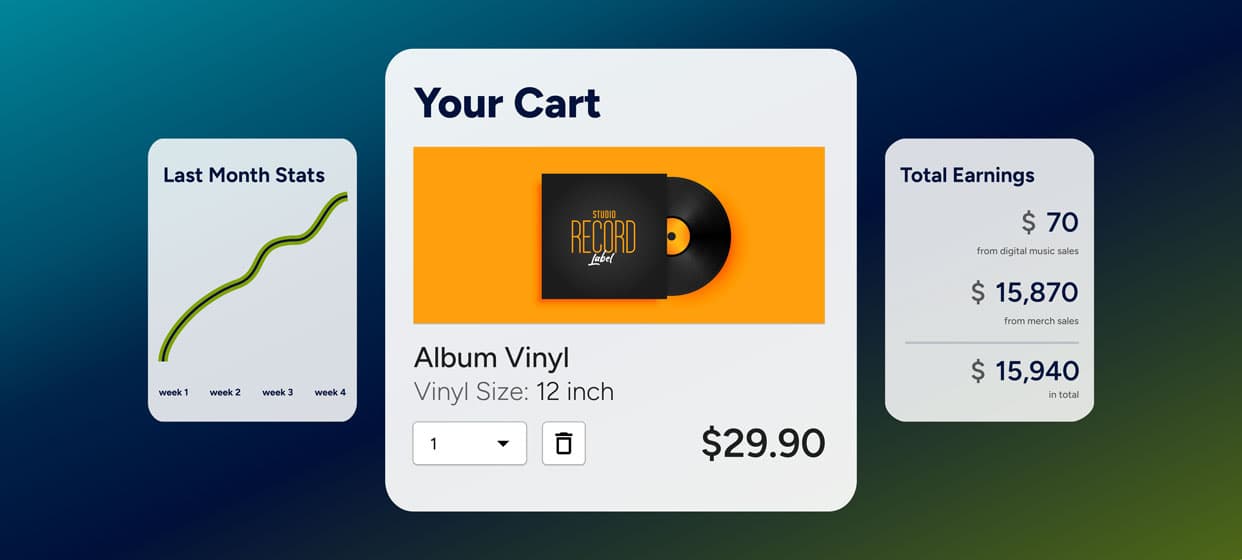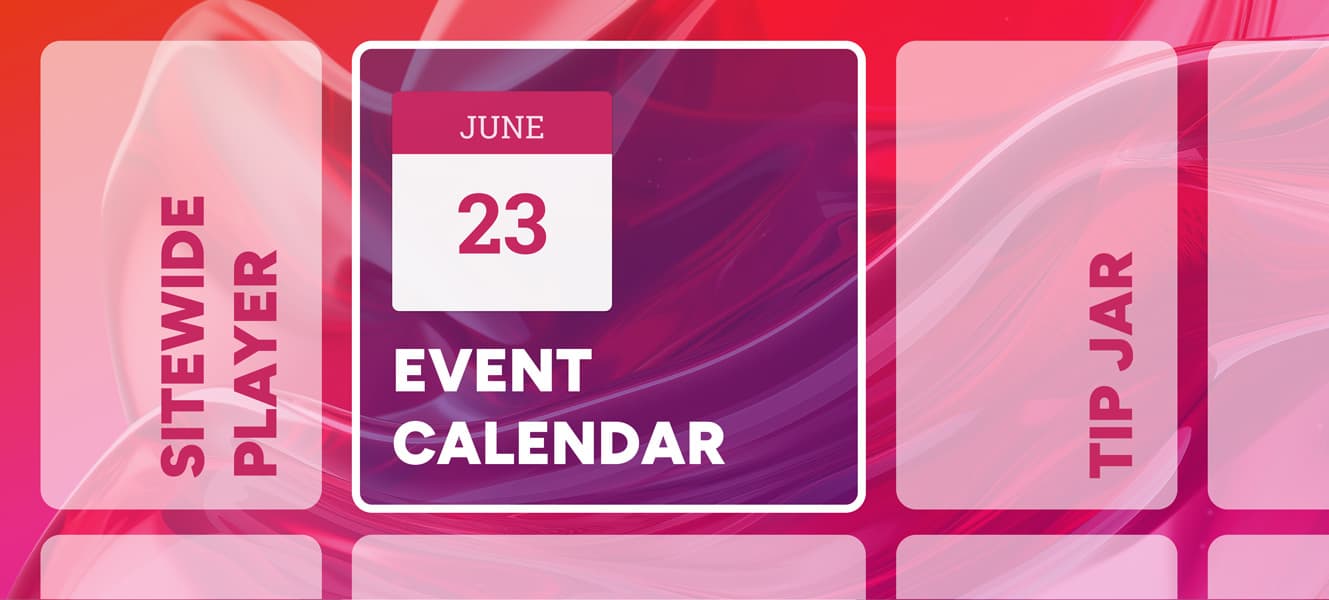BACK TO BLOG
How to Write The Perfect Artist Bio: Top Tips
![[object Object]: a purple background with the word artist bio on it](/_next/image?url=https%3A%2F%2Fnoiseyard.nyc3.cdn.digitaloceanspaces.com%2Fnoiseyard%2Fuploaded-images%2FuploadedImage291024110434061159324959.jpg&w=3840&q=100)
Your artist bio is often the first thing new listeners, industry professionals, and potential collaborators read about you. It tells your story, showcases your personality, and helps people understand what makes your music unique.
A well-crafted bio can help you stand out, whether you’re pitching to a playlist, applying for a gig, or introducing yourself to new fans.
Not sure where to start? We’ve got you covered.
Why Your Artist Bio Matters?
Your bio isn’t just a formality - it’s your first impression. A strong bio can:
Make you look more professional
Help press, blogs, and promoters understand who you are
Give new fans a reason to connect with you
Make it easier for industry contacts to write about you
No matter what stage you’re at in your music career, having a clear, engaging artist bio is essential.
Plus, if you have a website, your bio is one of the most important pieces of text for SEO (Search Engine Optimization). Search engines scan this section to understand who you are and how to categorize your site.
Using the right keywords naturally in your bio can help new fans discover you online.
How to Structure Your Artist Bio?
A great artist bio should be concise, engaging, and informative. Here’s a simple structure to follow:
1. Start with a Strong Opening Line
Your first sentence should immediately tell readers who you are and what kind of music you make.
This is also the most important part for SEO - Google and other search engines prioritize the first 150 characters of text, so be sure to include your artist name and genre early on.
Example:
"Alex is a [genre] artist known for [key trait of your sound]. Blending influences from [similar artists or inspirations], their music is a mix of [descriptive elements].

Optionally, go beyond genre labels to describe your unique sound and energy. Use descriptive language that paints a picture of your music.
Example:
Instead of: “He’s a pop artist.”
Try: “Merging upbeat pop rhythms with introspective lyrics, he crafts tracks that feel like summer anthems with a thoughtful twist.”
This approach not only conveys your style but also creates a vivid impression that sets you apart.
2. Share Your Musical Journey
Every artist has a journey, and your bio is the perfect place to share yours. What inspired you to start making music? Were there pivotal moments, challenges, or milestones that shaped your career? Sharing personal anecdotes adds authenticity and draws readers into your world.
Example:
"Growing up in a small coastal town, Alex found her passion for music in the rhythm of crashing waves. After picking up her first guitar at 13, she hasn’t looked back, creating soundscapes that blend her love for nature with haunting indie folk melodies."
Make your story memorable - your fans want to know what makes you, you.

3. Highlight Achievements and Milestones
What makes your career impressive? Use your bio to showcase achievements that resonate with fans and industry professionals alike. These might include:
Streaming stats (“10M+ streams on Spotify”).
Performance highlights and collaborations with well-known artists (“Opened for [famous artist]”).
Press mentions (“Featured in Rolling Stone’s Top 10 New Artists”).
Awards or special recognition (“Winner of the 2023 Independent Music Award”).
Keep it concise and choose accomplishments that reinforce your credibility without overwhelming the reader.

4. First Person vs. Third Person: What’s Right for you?
The tone of your bio can vary depending on the audience. Decide whether to write in:
First Person: Ideal for fans. It’s casual, personal, and allows your personality to shine.
Example: “I started writing music as a way to cope with life’s ups and downs. Now, it’s my way of connecting with the world.”Third Person: More formal and professional, making it suitable for press kits or media profiles.
Example: “Known for her ethereal vocals and storytelling lyrics, Julia has quickly become a rising name in the indie scene.”
Both styles are effective; ultimately, the choice depends on your brand identity and the impression you want to convey.

5. Keep It Concise and Engaging
Your bio doesn’t need to tell everything. Focus on the most important elements—your story, sound, and key achievements - and keep it under 300 words for general use.
For platforms like Noiseyard, your bio becomes a central piece of your online presence. It should be engaging and easy to read while enticing listeners to explore your work further.
6. Match Your Tone to Your Music
The tone of your bio should reflect your artistic identity. Here are some cliche examples:
A playful pop artist might adopt a fun, light-hearted tone.
A serious classical musician may prefer an elegant, polished style.
A rebellious rock artist can incorporate bold, edgy language.
Your bio is an extension of your brand - let it match the vibe of your music.

7. Update Your Bio Regularly
Your career evolves over time, and your bio should, too. Major releases, collaborations, tours, or awards are all reasons to refresh your bio. If your sound or artistic direction changes, your bio needs to reflect that.
Pro tip: Use Noiseyard’s blogging and newsletter tools to keep fans updated on your journey in more detail.
8. Use Quotes or Testimonials
Consider including a short, glowing review or press quote in your bio to add credibility.
Example:
"Her music is a stunning blend of emotion and creativity that leaves listeners captivated.” – Rolling Stone
Quotes can provide an outsider’s perspective on your talent and artistry, which is especially valuable for press kits.

9. Add a Call-to-Action
End your bio with a clear invitation for fans to engage with you. Whether it’s directing them to your website, social media, or newest release, make it easy for them to take the next step.
Example:
"Discover more of Alex’s music on her Noiseyard website or follow her on Spotify to stay updated on new releases."
10. Seek Feedback
Before finalizing your bio, seek feedback from trusted friends or industry peers. They can offer insights on whether your bio accurately represents you and engages the reader.

How Your Artist Bio Affects SEO (If You Have a Website)?
If you have a website, your artist bio is one of the most important pieces of text for SEO.
Search engines use it to understand your music and rank your site accordingly.
Here’s how to optimize it:
Include your artist name and genre in the first 150 characters – This helps search engines quickly identify your music.
Use natural keywords – Mention relevant terms like your music style, city, or influences without overstuffing.
Keep your bio updated – Adding new releases, tours, or achievements keeps your site fresh and relevant.
Link to other pages – If you have a press kit or blog, linking to them within your bio can improve your site's structure.
A well-optimized bio helps your website rank higher in search results, making it easier for fans and industry professionals to discover you online.
Want more guidance? Check out our full SEO guide for musicians to learn how to optimize your website and improve your online visibility.
Final Thoughts
A well-crafted artist bio is an essential tool for any musician looking to leave a lasting impression.
By sharing your story, defining your style, and highlighting your achievements, you can create a bio that resonates with fans and industry professionals alike.
With Noiseyard, you can easily showcase your bio, music, and journey in one place - helping you connect with audiences and grow your career like never before!
Other Blog Posts

Marketing & Promotion
What to sell as a musician online (From essentials to creative extras)

Music Career Advice
Why Every Musician, Band, or DJ Needs a Website: A Comprehensive Guide

Website Tips
10 website features every musician needs to grow in 2025

Marketing & Promotion
Noiseyard vs Bandzoogle: Which one stands out for musicians
Useful tips and tricks, delivered right to your inbox.
Join our newsletter to keep informed about Noiseyard updates and new blog articles. You can unsubscribe any time.